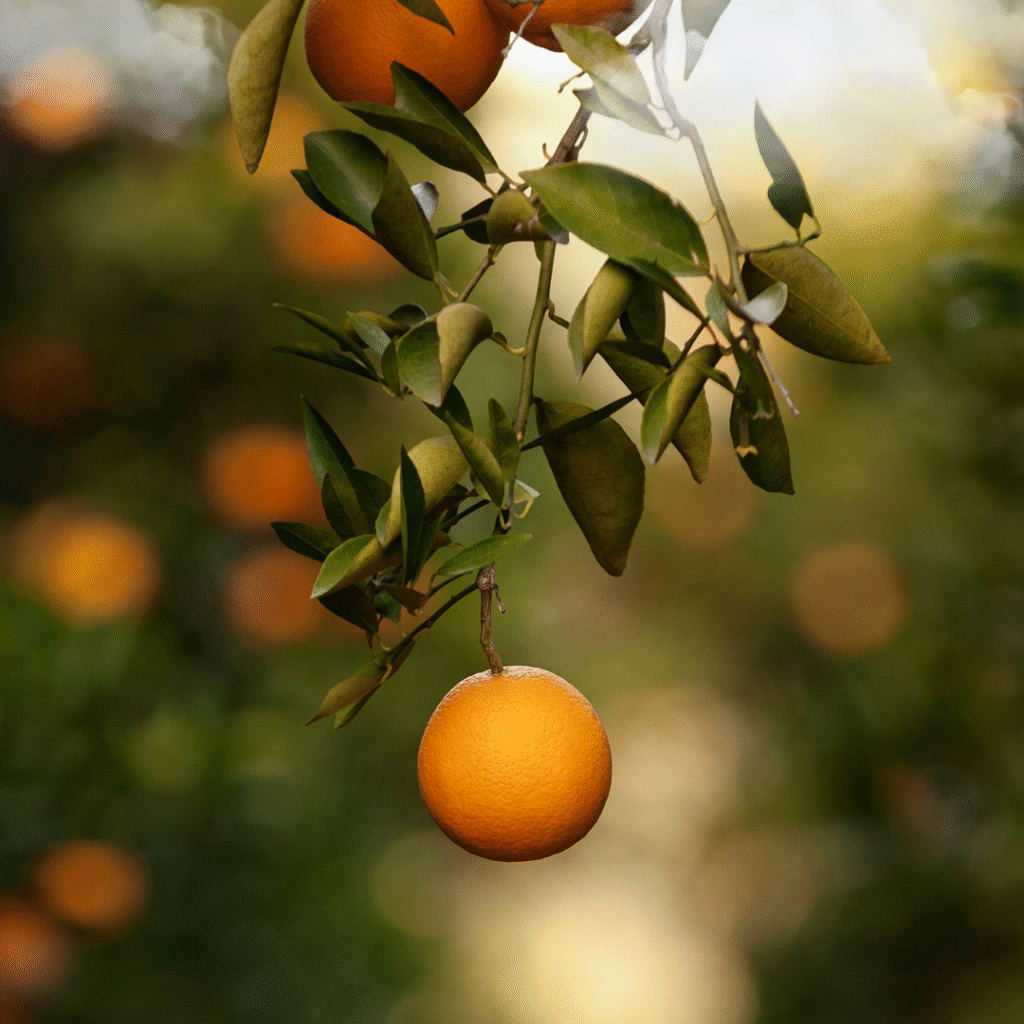
This children’s article, The juicy history of oranges, has been written for native English speakers and learners of English as a second or foreign language. It can help children build vocabulary, learn about food history, and discover how oranges travelled the world. Written by Mark Pulley, a teacher and writer who creates fun and informative news articles for English learners.
Where did oranges come from?
Over 4,000 years ago, the first wild orange trees grew in Southeast Asia, in areas that are now India, China, and Vietnam. These early oranges weren’t the sweet, juicy fruit we know today; some were bitter, and others were tiny.
Oranges are part of the citrus family, which is like a big, juicy family tree. Their cousins include lemons, limes, and grapefruits, all known for their tangy, refreshing taste
Oranges go travelling
Traders carried oranges along the Silk Road, the ancient trade route connecting Asia to the Middle East and Europe. By the time of the Roman Empire, oranges were already being enjoyed as a tasty treat.
Years later, explorers and sailors took orange trees with them on their voyages. They weren’t just delicious, they also helped sailors avoid scurvy, a disease caused by a lack of vitamin C.
When Spanish explorers reached the Americas in the 1500s, they planted orange trees in the warm climates they found there. Florida and California became famous for their orange groves, and today they produce millions of oranges every year.
Why do we love them so much?
Oranges are not only sweet and refreshing but also packed with vitamin C, which helps keep us healthy. They can be eaten as fruit, squeezed into juice, or even used in cakes, marmalades, and sauces. Their bright colour and juicy taste have made them one of the most popular fruits on Earth.
The English word “orange” comes from the Sanskrit word nāraṅga. In many other languages, the word for orange is very similar. The colour orange is actually named after the fruit. Before oranges were known in Europe, the colour didn’t even have its own name; people used to call it ‘yellow-red’.

Article vocabulary list
- Southeast Asia – a region of Asia that includes countries like Vietnam, Thailand, and Cambodia
- Bitter – a strong, sharp taste that is not sweet
- Silk Road – an ancient trade route linking Asia with Europe and the Middle East
- Scurvy – an illness caused by not getting enough vitamin C
- Groves – areas of land where fruit trees are grown together
- Marmalade – a sweet spread made from oranges and sugar
- Sanskrit – an ancient language from India
- Vitamin C – an important nutrient that helps keep the body healthy
Comprehension questions
Just click the plus (+) to see the answer
1. Where did the first wild oranges grow?
A) Africa
B) Southeast Asia
C) Europe
Answer: B) Southeast Asia
2. Why did sailors take oranges on their ships?
A) To trade them
B) To avoid scurvy
C) To make marmalade
Answer: B) To avoid scurvy
3. Which states in the USA are famous for growing oranges?
A) Florida and California
B) Texas and New York
C) Nevada and Oregon
Answer: A) Florida and California
4. What is the English word ‘orange’ originally from?
A) Latin
B) Greek
C) Sanskrit
Answer: C) Sanskrit
5. What plant family do oranges belong to?
A) Rose family
B) Citrus family
C) Apple family
Answer: B) Citrus family

Mark is a writer and EFL teacher from England with eight years’ experience. He’s passionate about travel, sport (especially football), animals, nature, and history, and enjoys helping children explore the world through language and learning.




